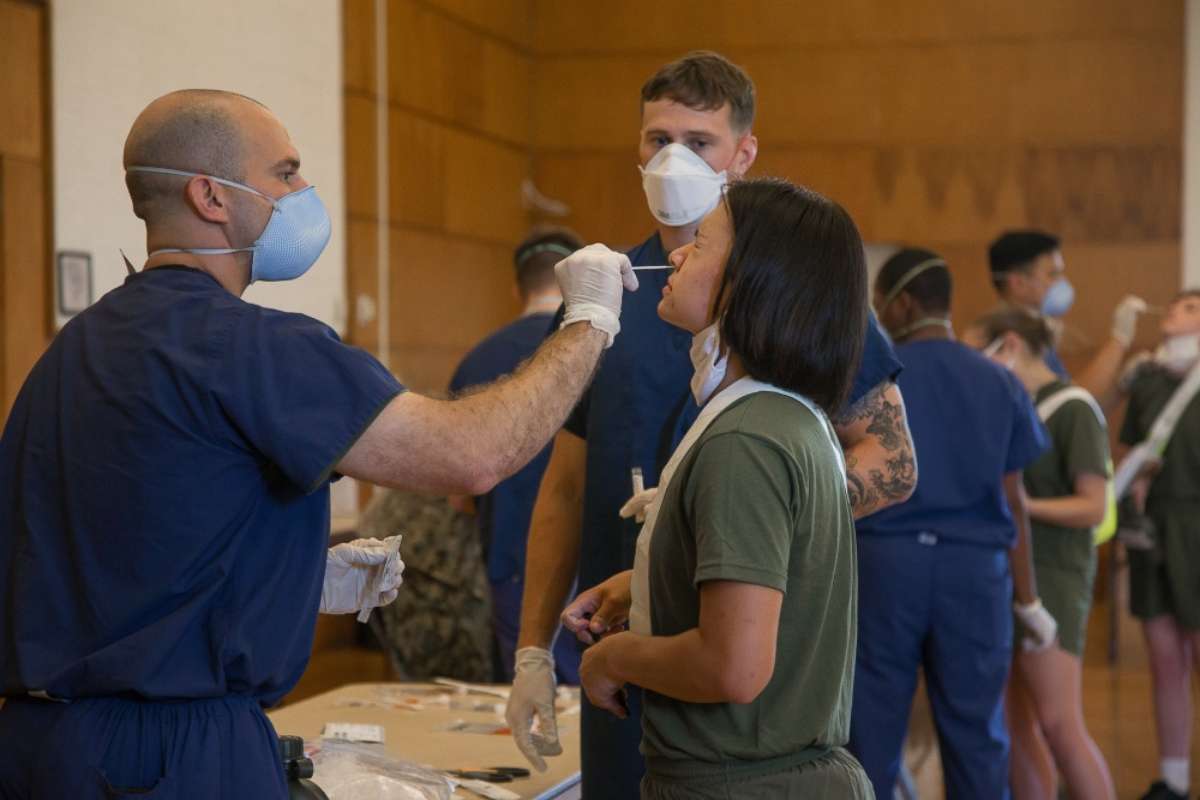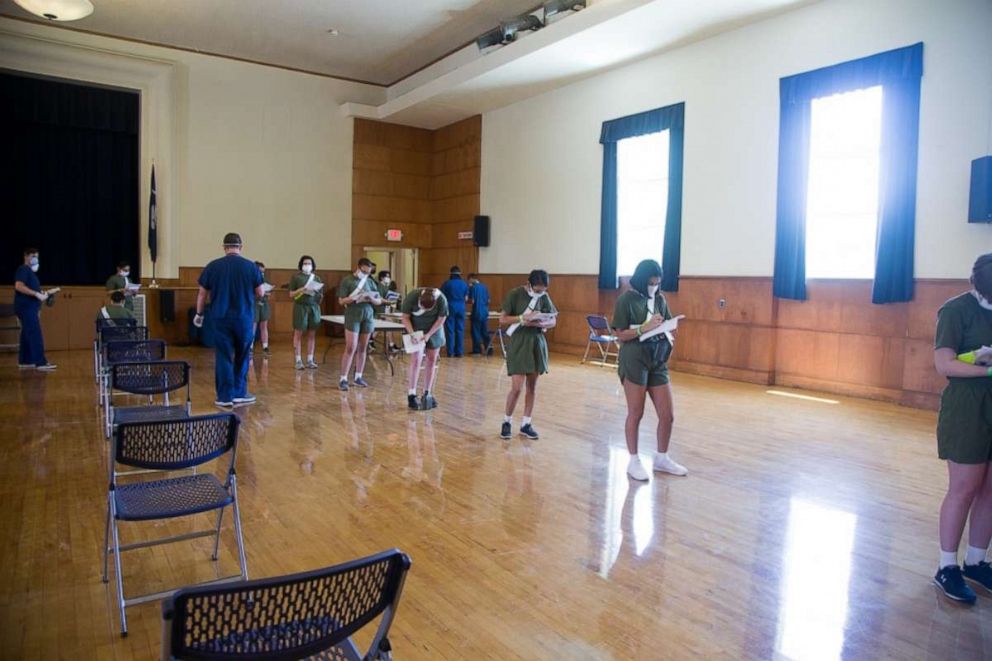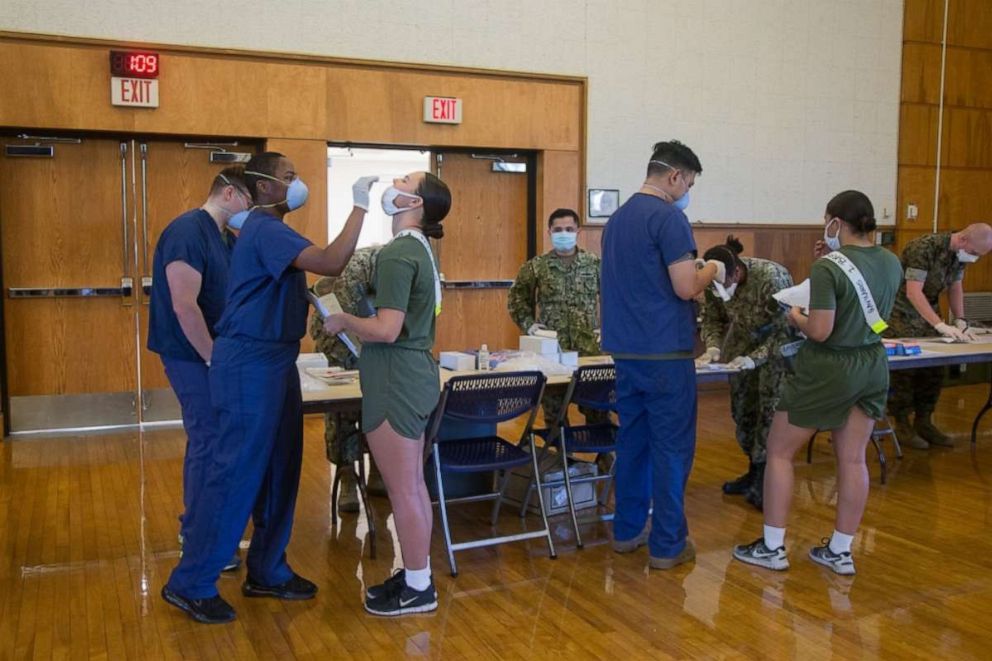Broad study of Marine recruits shows limits of COVID-19 symptom screening
Adding COVID-19 testing to temperature checks and screening is more effective.
A research study of more than 1,800 young Marine recruits has found that symptom-based screening methods like temperature checks and screening questions rarely detect individuals infected with COVID-19 who are not showing any symptoms.
Published in the New England Journal of Medicine, the joint study by Navy medical researchers and Mount Sinai's Icahn School of Medicine, has implications for schools, colleges and businesses that often rely on these measure in an attempt to limit the spread of the virus in group settings and it indicates that the possible addition of testing might be a more reliable way to reach that goal.
The COVID-19 Health Action Response for Marines study -- known by the acronym CHARM -- tracked 18- and 19-year old Marine recruits who arrived at The Citadel in South Carolina this summer for a two-week quarantine prior to entering boot camp at Marine Corps Recruit Depot Parris Island.

Prior to arriving at The Citadel, the 1,848 recruits who volunteered for the study, followed Marine COVID health protocols and quarantined at their homes for two weeks.
Upon arrival, the recruits were given temperature checks and filled out questionnaires intended to identify if they had come into contact with someone who had been infected with COVID-19.
The recruits then received nasal, saliva and blood tests to determine if they had the novel coronavirus and received additional rounds of testing the following week and four more tests every two weeks after that. They also continued to receive daily checks for fevers or any other symptoms.
It was that initial round of testing that detected 16 positive cases, with only one displaying symptoms, among recruits who did not have temperatures and whose questionnaires did not indicate they had been at risk for exposure to the disease.

The screening protocol did detect two high temperatures and a runny nose that were symptomatic cases, but the majority were detected by testing. During the two-week quarantine, 51 recruits or 3% of those in the study tested positive, with only five of them displaying symptoms.
Genetic research done at Mount Sinai later determined that there had been six clusters, though everyone had followed rules about wearing masks, social distancing, pre-plating their food and the regular use of bleach wipes.
One of the study's authors said the research data highlighted the limitations of symptom screening and the assessment of risk factors particularly among a healthy, young population.
"Our data certainly demonstrate the occurrence of asymptomatic spread within this age group," said Cmdr. Andrew Letizia, a Navy doctor and researcher at the Naval Medical Research Center who co-led the study.
"Without a doubt that's one of the major takeaway findings," said Letizia. "Without observing vigorous public health measures and potentially augmenting that with additional testing strategies, you're never going to find these folks and this spread will continue to occur."

"If you want to control the virus in a particular population you need to integrate all of your infection control measures as effectively as you can in that population, together with comprehensive and repeated testing of individuals," said Dr. Stuart Sealfon, a Mount Sinai researcher.
Screenings are "clearly having an effect but it's not foolproof," said Sealfon.
"So you need to marry that to testing to be able to identify all your infections before they can spread to other members and to suppress suppress the virus more effectively,' he added.
Researchers were also surprised by the intensity of the viral loads among the recruits who tested positive for the disease but displayed absolutely no symptoms.
"Some of them had fantastically high levels of virus, said Sealfon, "Some of the asymptomatic subjects seemed to be almost virus factories."
Each of the six clusters could be traced genetically to six distinct strains of the virus which helped researchers identify how the virus spread through platoons and living arrangements.
"This is just a really infectious virus," said Dr. Harm Van Bakel from the Mount Sinai team.
"You're in almost as ideal as possible a scenario for quarantine and controlling the quarantine," said Van Bakel. "And even in these sort of maximum settings of quarantine effectiveness you still can observe transmissions."
Letiizia said the results of the study will be augmented by another analysis of an additional 1,700 Marine recruits who entered their two week quarantine at a hotel in Atlanta after The Citadel became unavailable with the start of the academic year.
There will also be further study of the additional rounds of COVID testing the 3,500 Marine recruits in the study experienced for the two months they were at boot camp.




